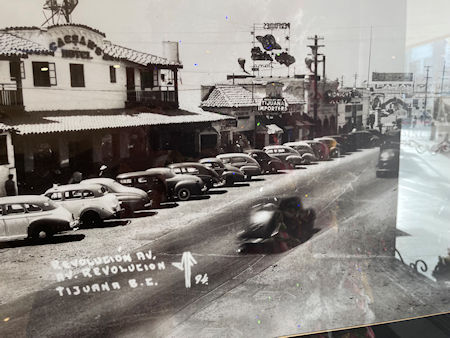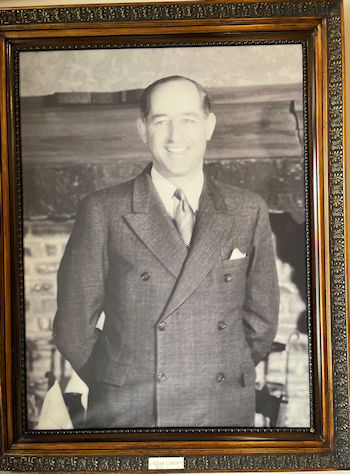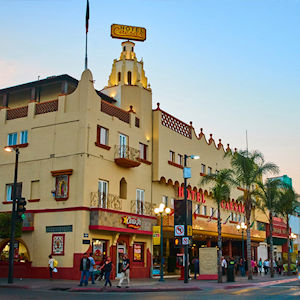 |  |
By Greg Niemann

There are culinary urban myths around the world, and Baja California is no exception. Here are a few, many having been circulating for years—true or not: the Margarita cocktail was invented in Baja; the Fish Taco originated in Baja; and the ubiquitous Caesar Salad was born in Tijuana, Baja California.
Let’s explore these for starters:
The Margarita is as Mexican as the tequila it’s made from! There are several versions as to its origin, including that it was first concocted in 1941 at Ensenada’s Hussong’s Cantina. The most likely, and earlier, source is that in 1938 Carlos “Danny” Herrera developed the drink (tequila shot—a lick of salt and a wedge of lime) at his Rancho La Gloria (Tijuana-area) restaurant, He named it for one of his customers, an aspiring actress named Marjorie King.
As to fish tacos, I personally discovered that uncommon taco in the late 1970s in the Primo Tapia area. Also in the 70’s a couple of places in San Felipe were making them, thus inspiring entrepreneur Ralph Rubio to bring the now-worldwide fish taco to the states in 1983 via his new Rubio’s Restaurant chain.
The hawkers at the Ensenada fish stands, however, claim they had been offering them since 1958 when their outdoor market opened. I believe they most likely did, but Rubio gave them the stateside attention they deserved.

Hail Caesar!
The Caesar Salad is the real deal—a dish invented in Baja California. While there are several published discrepancies as to the actual year it was invented, all accounts credit that the world-famous Caesar Salad was first concocted by Caesar Cardini, chef and then owner of the also historic Caesar's Restaurant in Tijuana.
An Italian immigrant, Caesar Cardini was a San Diego restaurant owner who decided to capitalize on the Prohibition drinking restrictions then hoisted upon Americans. The astute businessman opened a restaurant in Tijuana hoping to attract those thirsty state-side customers across the border.
Thus, he opened the original Caesar's bar and restaurant in a Tijuana alley in 1923 and the Americans began to visit. In fact, it was the heavy tourist influx that led to the salad which was invented the following year, on July 4, 1924.
According to Cardini’s daughter Rosa Cardini (1928-2003) her father invented the salad when a 4th of July, 1924 rush depleted the kitchen's supplies. Cardini made do with what ingredients he had, and then added the dramatic flair of the table-side tossing.
World famous chef Julia Child (1912-2004) was a 13-year-old Californian on a trip to Tijuana with her parents when she experienced the salad. A server came up to the table—in her case, it was Caesar Cardini himself—and prepared the salad in the dining room as she and her family watched. She admitted in her later years she never forgot that dining experience.

Not long after Julia and her parents experienced Cardina’s new concoction, Caesar’s restaurant moved from the alley to 2nd Street (1926). In December 1930, Cardini opened the now historic Caesar's Hotel on Avenida Revolución (between 4th and 5th streets) and the restaurant has graced that location ever since.
Because of the fame the restaurant had generated with tourists, Cardini built the hotel to also include an Italian canteen and a courtyard. The main factors of this success were the Caesar Salad and the presence of a many prominent personalities who were visiting Tijuana in increasing numbers. The official gala hotel opening took place on March 14, 1931.
A reception hall was also built to host the first International Rotary Club conference in November 1931, organized by the Rotarians of California.
What has made Tijuana’s contribution to the culinary world popular is the peculiar combination of its ingredients and a simple preparation. Now international, it is possible to find various versions of it on the menus of a good number of restaurants around the world.
Whipped up tableside by attentive chefs amid “oohs” and “ahhs,” the original Caesar Salad and accompanying garlic bread is the closest thing a diner can come to being pampered for a minimal charge. Even those who are not fans of Caesar Salad are usually impressed with and delighted by the tableside ceremony.

Caesar’s diners start out with the customary tortilla chips and salsa, fixtures in Mexican restaurants. Shortly the ingredients for the salad are wheeled up in a two-tiered cart. With gustatory flair the waiter will unveil a large wooden bowl, salad thongs and dispatch the eggs, lettuce leaves, sauces and oils like a painter creating a masterpiece. After several minutes of careful blending and folding, rather than haphazard mixing, the work of art is presented on chilled plates.
Many years after her initial Caesar’s visit, Chef Julia Child was gifted the original recipe from Rosa Cardini. The recipe, shown below, features many ingredients one would expect - whole romaine hearts, garlic-infused croutons, and freshly grated Parmesan cheese of course. The dressing includes lemon juice, olive oil, wine vinegar and a splash of Worcestershire sauce. What can surprise many Caesar salad lovers, those who love anchovies at least, is that Cardini's recipe does not include anchovies. Instead, garlic, Parmesan, and Worcestershire sauce were part of the line up that brought the salad to life.
The “Original Caesar’s Salad” as presented by the Hotel Caesar is as follows:
Original Caesar Salad (For 4 persons)
Even though the original 2-story 72-room Hotel Caesar had been renovated, it closed down in 2009 because of fewer American visitors. The sagging economy and continued long border wait times were among the factors that caused the decline in tourism. The hotel was reopened in July 2010 with a luxurious interior reminiscent of the 1920s. It is still in existence and waiters continue to prepare the "original" Caesar salads tableside.
The cool, restful vintage restaurant is a welcome relief to the frenzy on the sidewalks outside where tourists gawk awkwardly at foreign wares while hustling shopkeepers do their best to lure them inside.
In conclusion, the Caesar Salad wasn’t invented in France or Italy, countries known for rich and varied adaptations of traditional foods. Nor was it named for Julius Caesar, the Roman emperor who has a month named after him and a pizza chain as well. No, it was Caesar Cardini, and his Tijuana restaurant really was the birthplace of the famous Caesar Salad.
Editor's Note: Interested in visiting the iconic and luxurious Caesar's Restaurante to enjoy the original Caesar Salad? Check out our article: Caesar's Restaurant Tijuana.